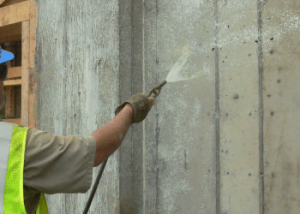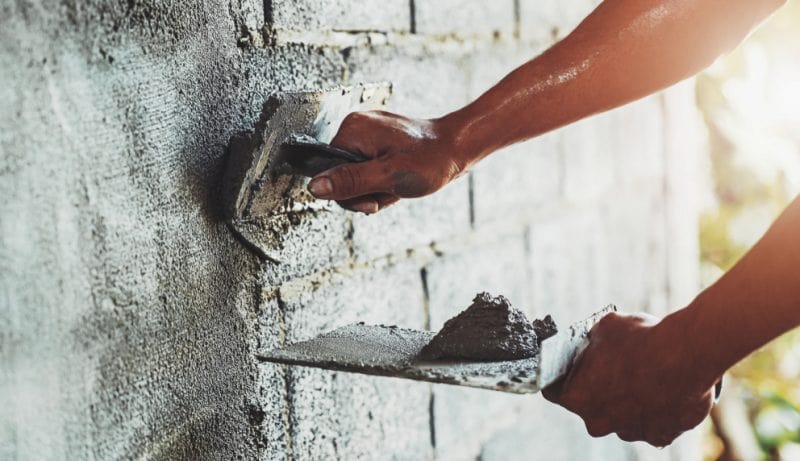Table of Contents
In this article, we will discuss the curing of plaster.
1. Introduction
“Curing of plaster refers to the process of maintaining the temperature and the moisture of plaster within the acceptable range for the hydration reaction such that the plaster develops into a hard mass with desirable properties“.
Curing is not only the application of water over the plastered surface; preventing the loss of moisture is also the type of curing.
2. Way of Curing Plastered Surface
Continuous wetting of the surface, using different compounds, using wet jute bags, etc. are simple ways of curing the plastered surface.
a. Spraying (or fogging)
Spraying is carried out for curing structural elements such as columns, plastered surfaces, retaining walls, etc.
In this method, curing is done by the application of water through spraying by pipes.

b. Wet Covering
The wet covering is adopted when sufficient water is not available.
In this method, curing is done by covering the concrete members with wet gunny bags, wet jute mats, wet hessian cloth, etc.

c. Shading Method of Curing
The shading method of plastered is a simple method that involves preventing the exposure of the plastered surface to sunlight and heat thereby preventing the evaporation of water from the plastered surface.

3. Objective of Curing Plastered Surface
The major aim of the curing on the plastered surfaces are listed as follows:
i. To mitigate the shrinkage of the plastered surface.
ii. To increase the desirable properties of plastered surfaces such as impermeability, strength, durability, etc.
iii. To maintain the desired temperature for the hydration reaction.
iv. To maintain the required moisture content for the complete hydration of the plastered surfaces.
v. To prevent the untimely or pre-mature drying out of plastered surfaces due to wind, sun, etc.
4. Note
Curing of cement plaster should be executed after 24 hours of the plastering work and should be done for minimum of 7 days. ( As hydration reaction takes place for about 28 days. Curing for nearly 28 days is best if possible. )

5. Importance of Curing of Plaster
The main importance of curing can be listed as follows:
i. It is an essential process for the development of strength and hardness on hardened surfaces.
ii. It is necessary to ensure that the plastered surface maintains its performance ability and durability.
iii. It provides more resistance to the abrasion of the surface.
iv. The microstructure of the plastered surface is improved due to the curing process.
v. It makes the plastered surface more resistive towards cracks, vegetal growth, chemical attacks, etc.
6. Advantages of Curing
The advantages of curing are as follows:
✔ Avoid high internal thermal/temperature gradient.
✔ More water tightness.
✔ More durability
✔ Less volumetric change
✔ More strength and abrasion resistance.
7. Disadvantages of Curing
The disadvantages of curing on the plastered surface:
✔ Require special arrangement.
✔ Expensive
✔ Chance of growth of organic plants.
| Read More: 26-types of concrete |

